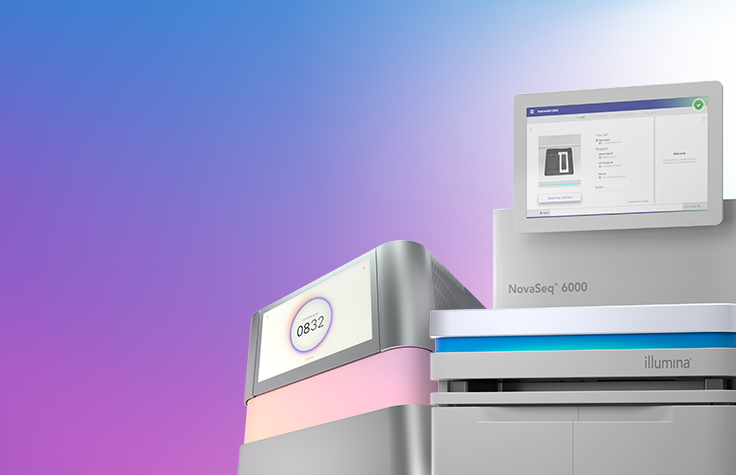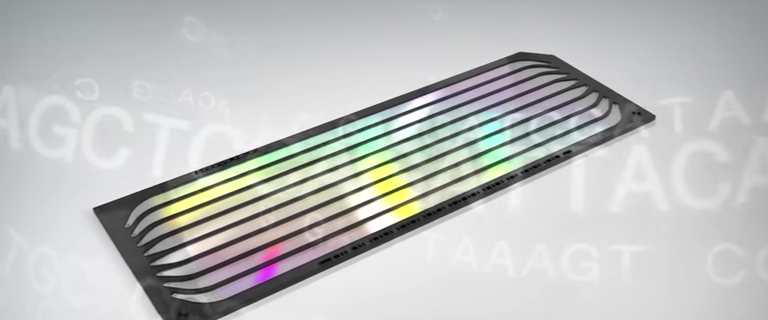Patterned Flow Cell Technology
Breakthrough Boost in Sequencing Power
Our innovative patterned flow cell technology offers an exceptional level of throughput for diverse sequencing applications. Patterned flow cells use distinct nanowells for cluster generation to make more efficient use of the flow cell surface area. This advanced flow cell design contributes to increased data output, reduced costs, and faster run times.
Distinct, Ordered Nanowell Design
Patterned flow cells contain billions to tens of billions of nanowells at fixed locations across both surfaces of the flow cell. The structured organization provides even spacing of sequencing clusters to deliver significant advantages over non-patterned cluster generation.
- Clusters can only form in the nanowells, making the flow cells less susceptible to overloading, and more tolerant to a broader range of library densities.
- Precise nanowell positioning eliminates the need to map cluster sites, and saves hours on each sequencing run.
- Higher cluster density leads to more usable data per flow cell, driving down the cost per gigabase (Gb) of the sequencing run.
Prearranged Cluster Distribution on the Flow Cell
Patterned flow cells are produced using semiconductor manufacturing technology. Starting with a glass substrate, patterned nanowells are etched into the surface for optimal cluster spacing. Each nanowell contains DNA probes used to capture prepared DNA strands for amplification during cluster generation. The regions between the nanowells are devoid of DNA probes.
The process ensures that DNA clusters only form within the nanowells, providing even, consistent spacing between adjacent clusters and allowing accurate resolution of clusters during imaging. Maximal use of the flow cell surface leads to overall higher clustering.
Exclusion Amplification Chemistry
Our proprietary exclusion amplification clustering method further increases data output. Exclusion amplification allows simultaneous seeding (landing of the DNA strand in the nanowell) and amplification during cluster generation, which reduces the chances of multiple library fragments amplifying in a single cluster. This method maximizes the number of nanowells occupied by DNA clusters originating from a single DNA template, increasing the amount of usable data from each run.
Advanced Systems Featuring Patterned Flow Cell Technology
Patterned flow cell technology makes data-intensive applications more cost-effective. The NovaSeq X and NovaSeq X Plus systems unite the latest high-performance imaging with the next generation of Illumina patterned flow cell technology. The updated NovaSeq X series flow cell design further reduces the spacing between nanowells, significantly increasing cluster density and data output.
High-Throughput Proteomics with NGS
Learn how you can take multiplex proteomics to the next level and perform protein biomarker discovery using Illumina sequencers.
View Webinar
Related Content
Optimal Cluster Density Best Practices
Watch Illumina scientists discuss how over- and underclustering can affect your sequencing data. Learn about common clustering issues and ways to prevent them.
View VideoCluster Density Guidelines for Illumina Sequencing Platforms
Learn why cluster density is an important factor in optimizing data quality and yield, and find recommendations for each platform.
Read Technical Bulletin
